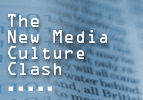



There are many concerns about embracing new media. For example, as hypertexts (compositions that likely would have been considered “new media” at the time of their introduction) became more prevalent, questions arose regarding their lack of linearity and how that feature would impact scholarship (Sullivan 2001, Ball 2004). Would an argument be complete if the reader was not guided through all the components in a proscribed sequence? Does the power of an argument diminish if each reader encounters and experiences it differently? Could a non-linear argument be considered scholarly?
Despite more than a decade of scholarship about non-linear argument and actual non-linear scholarship (to borrow and adapt Ball’s distinction), some still question the value of hypertextual or web-based articles. While few would argue that an article appearing in Kairos or other online journals should be considered scholarship, these types of compositions do not necessarily receive the same weight when departments consider faculty for promotion or tenure (Peterson 2002). Indeed, a CCCC survey on multimodal pedagogies in writing programs reveals that less than half of those surveyed (44 percent) affirmed that electronic publications had currently been counted toward tenure for current professors. Another 22 percent of those responding to the same question indicated that their department says it counts such publications, but no one had yet tried (Anderson et al 2006a).
This reluctance of departments to count new media scholarship toward tenure and hesitancy for professors to accept such work from students may stem from questions about the rigor and value of modalities other than writing. Some see the inclusion of visual elements as “too artistic” (Ball 2004, 404) and liken it to the “‘dumbing down’ of discourse” (Hill 2004, 109). This view relegates the visual to mere ornamentation lacking substance or argumentative power. However, this is not the case. Integration of multiple modes can enhance and transform meaning beyond decoration (NCTE 2005). As Bill Cope and Mary Kalantzis point out in their introduction to Multiliteracies, “Meaning is made in ways that are increasingly multimodal — in which written-linguistic modes of meaning are part and parcel of visual, audio, and spatial patterns of meaning” (2000, 5). And, as technology evolves, the boundaries between these modalities continue to blur.
The only thing we have to fear • A profess(or)ed reluctance • Visual (il)literates • Works cited • Home